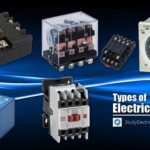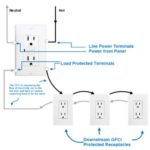Electrical engineering of course carries with it an inherent health and safety risk, yet, official statistics suggest this may be disproportionate among skilled labor roles. BLS figures indicate a relatively high injury incidence rate for electricians, especially when considering that many electrical faults and accidents result in fatality.
Arguably, new standards are required to tackle this; the relative reduction in inspections by bodies like OSHA has led to a lower rate of compliance, and this needs to be tackled before the figures become even more severe. Currently, attorneys are providing a safety net to bring employers to account.
Private litigation’s role
Attorneys play an important role in protecting workers. A work injury lawyer can help an electrician or their family to receive justice and restitution after they are injured through no fault of their own. This can be due to a negligent homeowner, or through tools provided through a contractor company that aren’t fit for use. This is incredibly important at the current time. As the National Fire Protection Association highlights, over 10,000 workers in the US are exposed to high levels of electricity, on or above dangerous, over every 5 year period. Currently, legal action is providing a layer of security.
Increased demand
There is a huge surge in demand for electricians; a GlobeNewsWire report suggests that the industry will reach $170 billion by 2027. There are two key reasons for this – more people are working from home and thus require electricians to make adaptations, and more houses and buildings are being thrown up due to the increased rate of purchase amid overall high equity levels.
At times of high business, safety standards can fall by the wayside. Ensuring that they don’t, and that electricians are afforded the time, space and safety measures they sorely need, is crucial, despite the pressures of an expanding labor force and their requirements both in and outside of the home.
The electric revolution
According to OHS magazine, 2022 will be the year in which America truly embraces electrification – from energy sources to the home. The days of fossil fuels powering everything are set to slowly be phased out, and a focus on high-voltage, high-current electrical generation brought into focus. That brings with it a whole new set of challenges for electricians and electrical engineers, and, indeed, a need for a new framework on safety. The types of transformers that are used, the level of resistance in systems, and the way that the energy grid interacts with the home will all change in the new normal of electrical generation. For the health and safety of workers, this could mean retraining, but will almost certainly mean large-scale regulatory change.
This is good news for jobs and clean energy, but will be of concern to electricians and engineers. As changes roll in, it is hoped that regulations will come with them to protect everyone. Only then can the industry and the public be assured of the safety of the men and women working to keep the lights on.






